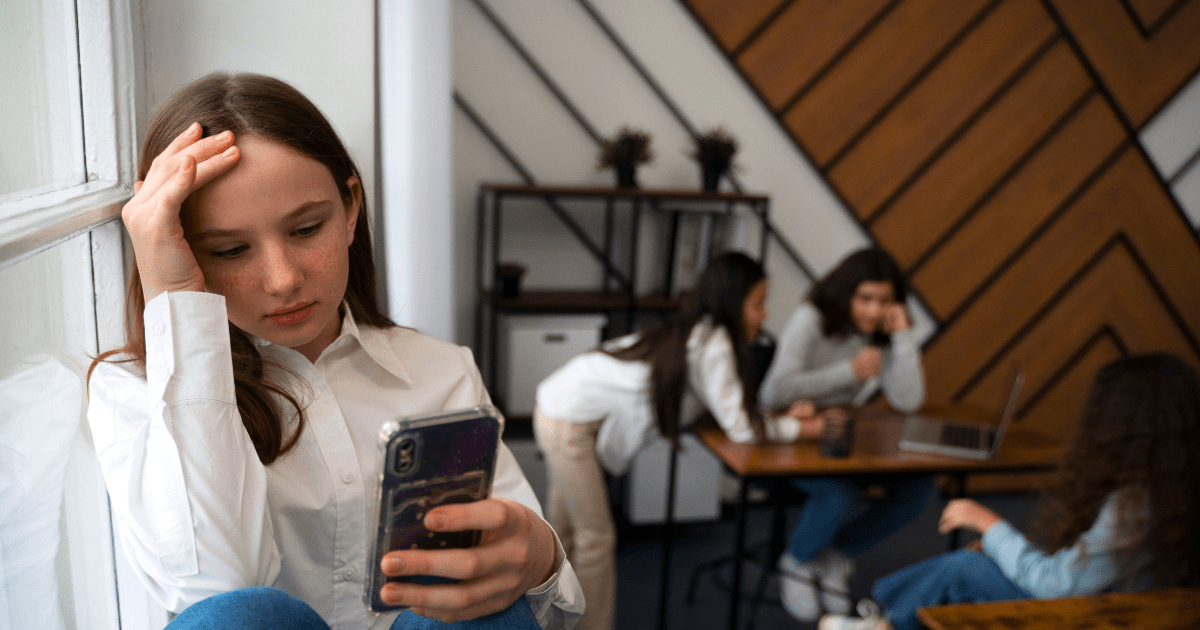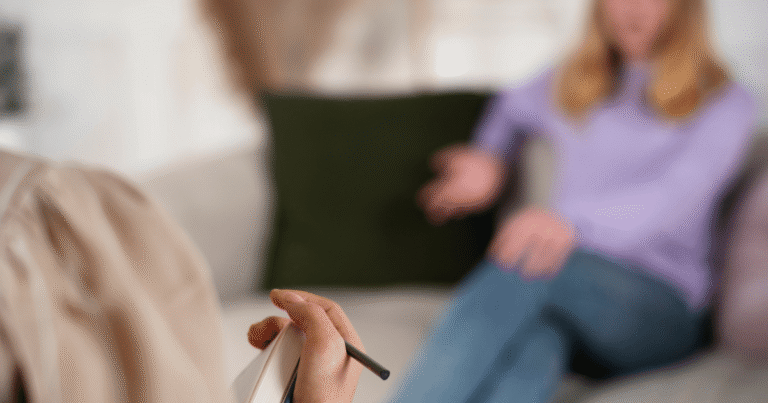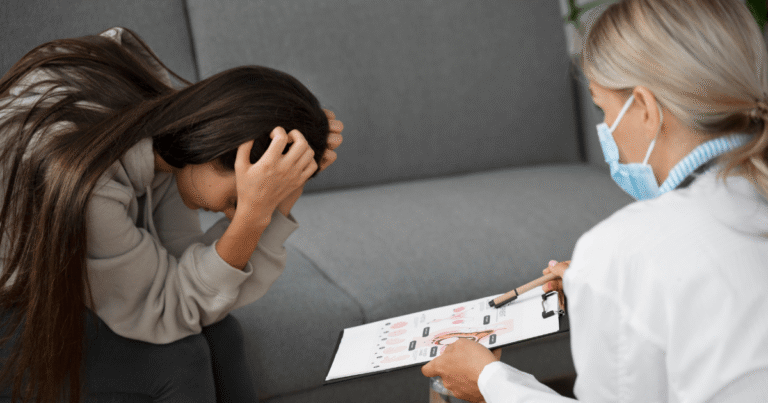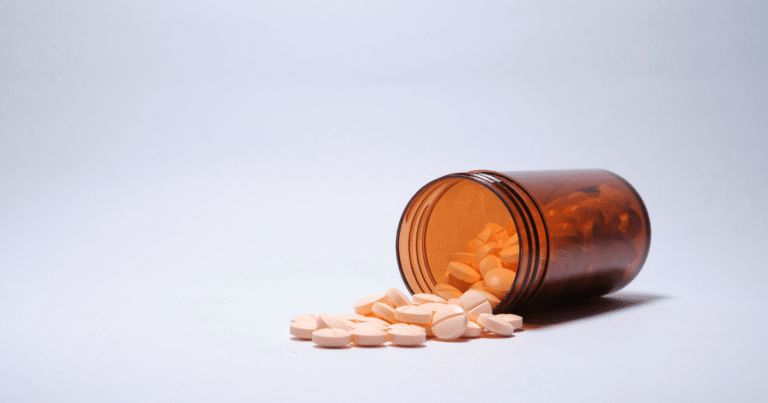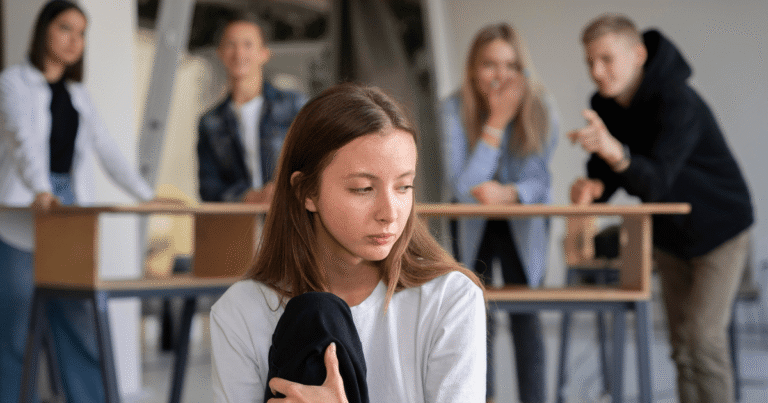What Are the Symptoms of a Social Anxiety Attack? A Complete Guide to Recognition and Response
Meta Title: Social Anxiety Attack Symptoms: How to Recognize & Respond Meta Description: Learn to identify social anxiety attack symptoms including physical, emotional, and behavioral signs. Get practical strategies for managing attacks when they occur.
Understanding the Terror of Social Anxiety Attacks
The moment arrives without warning. You’re at a work presentation, a social gathering, or even just ordering coffee when suddenly your body erupts into what feels like pure panic. Your heart pounds so hard you’re certain others can hear it, your hands shake uncontrollably, and your mind floods with catastrophic thoughts about humiliation and judgment. This is a social anxiety attack, and if you’ve experienced one, you know how absolutely terrifying and overwhelming it can be.
Social anxiety attacks represent the acute manifestation of social anxiety disorder, occurring when the fear of social evaluation becomes so intense that it triggers your body’s emergency response system. Unlike generalized panic attacks that can occur without obvious triggers, social anxiety attacks are specifically tied to social situations or the anticipation of social interaction.
The experience can be so intense that many people worry they’re having a heart attack, losing their mind, or experiencing some other serious medical emergency. Understanding what’s actually happening during these episodes is crucial for both managing them in the moment and reducing the fear of future attacks that often develops after experiencing one.
The Physical Storm: When Your Body Rebels
During a social anxiety attack, your body launches into full emergency mode, activating the sympathetic nervous system and flooding your system with stress hormones like adrenaline and cortisol. This biological response, designed to help you escape physical danger, creates a cascade of intense physical symptoms that can feel overwhelming and frightening.
Cardiovascular Symptoms
Your heart becomes the drum announcing your distress, often beating so forcefully that you can feel it pounding against your chest wall. Heart palpitations may create irregular rhythms that feel like skipped beats or fluttering sensations. The intensity can be so severe that many people experiencing their first social anxiety attack genuinely fear they’re having a heart attack.
Blood pressure typically rises during attacks, contributing to feelings of pressure in your head and chest. Some people experience a sensation of their pulse throbbing visibly in their neck or temples, adding to the sense that something is seriously wrong with their cardiovascular system.
Respiratory Distress
Breathing difficulties rank among the most frightening symptoms of social anxiety attacks. You might feel like you can’t get enough air, as if you’re breathing through a straw or someone is sitting on your chest. This sensation often leads to rapid, shallow breathing that actually worsens the problem by disrupting the balance of oxygen and carbon dioxide in your bloodstream.
Some people experience a choking sensation or feel like their throat is closing up, which can trigger additional panic about being unable to breathe or swallow. These respiratory symptoms often become the focus of intense worry, creating a cycle where fear of breathing problems actually perpetuates them.
Neurological and Sensory Changes
The altered brain chemistry during social anxiety attacks produces various neurological symptoms that can feel deeply unsettling. Dizziness and lightheadedness are common, sometimes accompanied by a sensation that the room is spinning or that you might faint at any moment.
Tingling and numbness, particularly in the hands, feet, and around the mouth, result from changes in blood flow and breathing patterns. These sensations can feel like electric shocks or the “pins and needles” feeling when a limb falls asleep, leading some people to worry about nerve damage or stroke.
Vision changes might include tunnel vision, blurred sight, or heightened sensitivity to light and movement. Some people report feeling like they’re seeing the world through a fog or that everything appears unusually bright or dim.
Temperature and Skin Reactions
Your body’s temperature regulation system goes haywire during social anxiety attacks, often producing simultaneous hot and cold sensations. Sudden hot flashes can make you feel like you’re burning up from the inside, followed immediately by chills that leave you shivering.
Sweating becomes profuse and often appears suddenly, particularly on the palms, forehead, and underarms. This sweating can feel different from normal perspiration, often described as cold and clammy. The fear of visible sweating can become an additional source of anxiety, particularly in professional or social settings.
Blushing represents one of the most socially visible symptoms, with intense reddening of the face, neck, and sometimes the chest. The awareness of blushing often intensifies the anxiety, creating a self-perpetuating cycle where fear of blushing actually triggers more intense blushing.
Gastrointestinal Chaos
Your digestive system responds powerfully to the stress response, often producing immediate and intense gastrointestinal symptoms. Nausea can range from mild queasiness to intense waves that leave you worried about vomiting in public. Stomach cramping and the sudden urge for bowel movements create additional worry about embarrassing bodily functions occurring in social settings.
Some people experience a complete loss of appetite, while others might feel intense hunger or strange cravings. The mouth often becomes extremely dry, making speaking difficult and adding to communication anxiety during social interactions.
The Mental Tornado: Cognitive and Emotional Overwhelm
While physical symptoms grab immediate attention, the cognitive and emotional components of social anxiety attacks often prove equally distressing and can persist long after physical symptoms subside.
Catastrophic Thought Patterns
During social anxiety attacks, your mind becomes a catastrophe-generating machine, producing rapid-fire worst-case scenarios that feel absolutely real and immediate. These thoughts often focus on themes of humiliation, rejection, and social failure that feel like genuine predictions rather than anxiety-driven distortions.
Common catastrophic thoughts include certainty that everyone is watching and judging you, conviction that you’re about to say or do something embarrassing, and predictions that any mistake will lead to complete social rejection or professional ruin. These thoughts feel compelling and true during the attack, even when your rational mind might normally recognize them as excessive.
The speed and intensity of these thoughts can be overwhelming, creating a mental avalanche where one fearful thought triggers ten more, each seeming more dire than the last. This cognitive overwhelm often makes it impossible to think clearly or remember simple things like your own phone number or what you were just talking about.
Dissociative Experiences
Many people experience strange alterations in their perception of reality during social anxiety attacks. Derealization creates a dreamlike quality where your surroundings feel unreal, distant, or like you’re watching everything through glass. Colors might seem muted or overly bright, sounds might feel muffled or artificially sharp, and familiar places might suddenly feel foreign and strange.
Depersonalization involves feeling disconnected from yourself, as if you’re watching your own life from outside your body or like you’re not really present in your own experience. Some people describe feeling like they’re in a movie or that their actions aren’t really their own.
These dissociative symptoms can be particularly frightening because they challenge your basic sense of reality and self. Many people worry that these experiences indicate serious mental illness or that they’re “losing their mind,” which adds another layer of fear to an already overwhelming experience.
Emotional Intensity and Fear
The emotional component of social anxiety attacks involves terror that feels completely out of proportion to the actual social situation. This isn’t ordinary nervousness or shyness; it’s genuine fear for your safety and wellbeing, even though the threat is social rather than physical.
Fear of losing control becomes paramount, with worry that you might do something completely out of character, start crying uncontrollably, or somehow expose your anxiety in a way that leads to total humiliation. This fear of losing control often becomes more frightening than the original social trigger.
Some people experience intense feelings of doom or impending disaster, as if something terrible is about to happen even though they can’t identify what that might be. This existential dread can persist even after other symptoms begin to subside.
Behavioral Responses: When Instinct Takes Over
The combination of physical and cognitive symptoms during social anxiety attacks triggers powerful behavioral responses that feel completely instinctual and often occur without conscious decision-making.
The Escape Imperative
The most powerful behavioral response during social anxiety attacks is an overwhelming urge to escape the situation immediately. This isn’t a casual desire to leave; it’s a compelling survival instinct that feels as urgent as escaping a burning building. People often describe feeling like they would do anything to get away, including making up medical emergencies or family crises to justify leaving.
This escape urge can be so strong that it overrides other important considerations like professional obligations, social politeness, or even personal safety. Some people have left important meetings, walked out of job interviews, or abandoned social commitments mid-conversation when the urge to escape becomes overwhelming.
Freezing and Withdrawal
Alternatively, some people experience a complete freeze response during social anxiety attacks, becoming physically unable to move or speak. This paralysis can feel like being trapped in your own body, aware of what’s happening around you but unable to respond appropriately.
Eye contact becomes impossible, with an irresistible urge to look down, away, or at anything other than other people’s faces. Voice changes often occur, with speaking becoming quiet, shaky, or completely impossible. Some people find that their voice disappears entirely or that they can’t form coherent words even when they try to speak.
Safety Behaviors and Coping Attempts
During attacks, people often engage in subtle behaviors designed to hide their anxiety or provide some sense of security. These might include gripping objects tightly for stability, positioning themselves near exits for easy escape, or using props like phones, drinks, or papers to occupy their hands and provide something to focus on.
Some people develop elaborate mental or physical rituals they believe will prevent or minimize social anxiety attacks. These might include specific breathing patterns, repeated phrases or thoughts, or particular ways of positioning their body or arranging their belongings.
Immediate Response Strategies: Managing the Crisis
When you recognize that you’re experiencing a social anxiety attack, having a prepared response strategy can significantly reduce the intensity and duration of symptoms while preventing the development of additional fear about future attacks.
Cognitive Interventions
The first step involves acknowledging what’s happening without adding judgment or additional fear. Remind yourself that you’re experiencing a social anxiety attack, that while it feels terrible, it’s not dangerous, and that it will pass. This cognitive acknowledgment helps activate the rational part of your brain and begins to counteract the catastrophic thinking patterns.
Challenge the most immediate catastrophic thoughts by asking yourself whether there’s actual evidence for your fears or whether you’re experiencing anxiety-driven predictions. Remind yourself that most people are focused on themselves rather than scrutinizing your every move, and that even if you do something embarrassing, the consequences are rarely as severe as anxiety predicts.
Physiological Regulation
Breathing exercises represent the most immediate and effective way to begin calming your nervous system during a social anxiety attack. Focus on slow, deep breathing, particularly emphasizing longer exhales than inhales. The 4-7-8 technique works well: breathe in for 4 counts, hold for 7, and exhale for 8.
Grounding techniques help anchor you in the present moment when dissociative symptoms make reality feel unstable. The 5-4-3-2-1 method involves identifying 5 things you can see, 4 things you can touch, 3 things you can hear, 2 things you can smell, and 1 thing you can taste.
Progressive muscle relaxation, even in abbreviated form, can help release the physical tension that accompanies social anxiety attacks. Starting with your feet and working upward, consciously tense and then relax each muscle group for a few seconds.
Behavioral Strategies
If possible, give yourself permission to take breaks during social situations when you feel an attack building. Step outside for fresh air, visit the restroom for a few minutes of privacy, or excuse yourself briefly to get water or use your phone. These brief respites can prevent full-blown attacks and give you time to implement coping strategies.
When you can’t leave the situation, focus on small, manageable goals rather than trying to perform perfectly. Aim to contribute one comment to a conversation, make eye contact with one person, or simply stay present for a specific amount of time rather than expecting yourself to feel completely comfortable.
Building Long-Term Resilience: Beyond Crisis Management
While immediate coping strategies are essential for managing social anxiety attacks when they occur, developing long-term resilience involves addressing the underlying patterns that make attacks more likely and building skills that reduce their frequency and intensity.
Professional Treatment Approaches
Cognitive Behavioral Therapy remains the gold standard treatment for social anxiety and can significantly reduce both the frequency and intensity of social anxiety attacks. CBT helps you identify and change the thought patterns that contribute to social anxiety while gradually exposing you to feared social situations in a controlled, supportive environment.
Exposure therapy, conducted with a qualified therapist, systematically desensitizes you to social situations that trigger attacks. This process helps retrain your brain’s threat detection system and builds confidence through successful social experiences.
Some people benefit from medication as an adjunct to therapy, particularly when anxiety attacks are frequent or severe enough to interfere significantly with daily functioning. SSRIs and other anxiety medications can reduce baseline anxiety levels and make therapeutic work more manageable.
Lifestyle and Self-Care Factors
Regular exercise has been shown to reduce overall anxiety levels and improve resilience to stress. Cardiovascular exercise, in particular, helps metabolize stress hormones and can reduce the likelihood of experiencing intense anxiety attacks.
Sleep quality directly impacts anxiety levels and emotional regulation. Poor sleep makes you more vulnerable to anxiety attacks and less able to cope effectively when they occur. Prioritizing sleep hygiene and addressing sleep disorders can significantly improve anxiety management.
Mindfulness and meditation practices help you develop a different relationship with anxious thoughts and physical sensations. Rather than being overwhelmed by anxiety symptoms, mindfulness allows you to observe them with curiosity and compassion, reducing their power to trigger full-blown attacks.
Moving Forward with Understanding and Hope
Experiencing social anxiety attacks can feel isolating and overwhelming, but understanding their symptoms and mechanisms is the first step toward regaining control. These attacks, while intensely uncomfortable, are not dangerous and represent your body’s misguided attempt to protect you from perceived social threats.
Recognition of symptoms allows you to respond more effectively when attacks occur and helps reduce the fear of fear that often develops after experiencing intense social anxiety. With appropriate support and strategies, most people can learn to manage social anxiety attacks effectively and reduce their frequency over time.
Remember that seeking professional help for social anxiety attacks is a sign of strength and self-awareness, not weakness. These symptoms represent a treatable condition, and effective interventions are available to help you reclaim your social confidence and freedom.
The path from social anxiety attacks to social freedom requires patience and persistence, but it’s absolutely achievable. With understanding, appropriate support, and effective coping strategies, you can move beyond the terror of social anxiety attacks toward a life where social situations feel manageable and even enjoyable once again.

